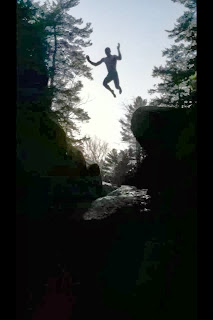Trip Report Continental Divide + The Wind River Range
Gear prep is important. The longer and more self-reliant the push, the more it matters. Your feet, your food, your shelter. Basic stuff can be a big deal if things hit the fan.
I’m proud of my coach Kurt, and I’m proud of myself. This was a new format for us. I’ve done enough unplanned shiver bivys and chosen not to press toward the summit when it’s storming. More than 10 fingers and toes; that’s how many times I’ve driven to Mt. Rainier to see if the NOAA weather forecast was as bad as it read. Turned around and went home; doesn’t feel like winning but it isn’t losing (fingers or toes). Judgment is important in the mountains because we love them but they don’t always love us back. “The mountain does not care” as someone once said.
The storm warning that went into effect for the Wind River Range in Wyoming was a bit unlucky. In mountaineering mentors always waited out the weather before we’d push upward. If there is a slated window for a trip, or race in this case, that adds a completely different mentality to decision-making, for some. Not for me.
Mental + Physical prep for the effort was 4mph average on skis towing a 60ish pound sled. That’s around 25 hours of moving time to clear the course.
Race start: It’s snowing sideways. No one lines up. Everyone is in their rig until right before gun. A dozen or so fat bikes and folks on foot. Four of us on skis.
Within the first 5 miles all the bikes are being pushed. The snow ranges from ankle to knee deep. A bit early in the day to start hallucinating but I imagine myself like a steam engine undulating through the punchy hills of West Virginia; the Pulk (sled with my gear I’m towing) has its own velocity and inertia pulling me backward when I want to go forward and pushing me forward right after being slowed by a snow drift. Conjugated rhythm.
The warming huts/check points: #1 25 miles. #2 50 miles. #3 67 miles. #4 83 miles. #5 101 miles.
I called Pete for beta a few weeks before the effort. He’s a large animal vetrinarian in Idaho and has done well at the event on skis a few times. “That stretch between the first and second aid station is the hardest. It’s exposed, it’s at night, and it’s the highest point on the course.” Pete cleared the course on skate skis last year. He’s stronger and faster than me on skis. Period. Which made him a good reference point for decision-making.
I came into #1 at 25 miles: a couple of hours behind Pete and Ginny Robbins who were rolling on classic skis + a pack. Being the first one towing a sled meant a bit more work to set the track. All good. Body temp, fueling, and energy felt as expected; still early yet. The objective observation of time was what activated decision-making. The only data point that matters in a race is the stopwatch.
We were all going much slower than anticipated.
Triage is pretty simple in my mind here: push upward toward the high point on the course, lean into the storm, push through the night, and hope to make it to Sheridan in 10 hours. Approximately the half way point.
Option two: Set up camp here. Wait out the storm. Press on at 3am. Clearing the course in ~45 hours.
Option three: Get yourself off the course via your own power while able.
There was no hesitation in my decision to get myself out independently rather than stressing the evacuation team. My interest originated in spending time in the Wind River Range on the Continental Divide in the winter. When it’s quiet. And to do it in a single push, my interest in which ends after about 25ish hours of moving time. Of the 50 or so folks who started, 7 or so finished.
Exiting the course down the Continental Divide, breaking trail, the wind howling. It’s quiet. Orion’s belt breaks through the clouds and stars come out. So bright. So clear.
I think about a friend I just lost. Taken by cancer before her time. Two young kids and a nice husband are still here. She’s not. She was a stubborn cuss and laughed at adversity. Man, I’m grateful to be alive and carry the energy of folks, friends, and mentors who’ve fallen on some bad luck.
This life is the after-party. It can’t possibly get any better than this.
Got what I came for.
Hammer on.

–Andrew


.JPG)

Comments